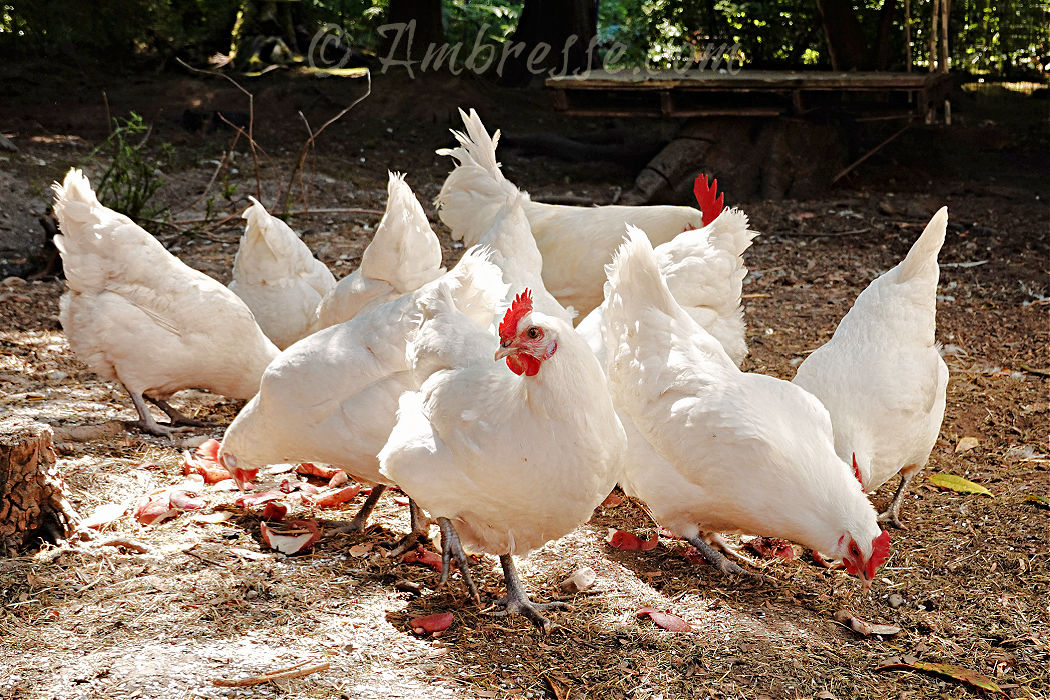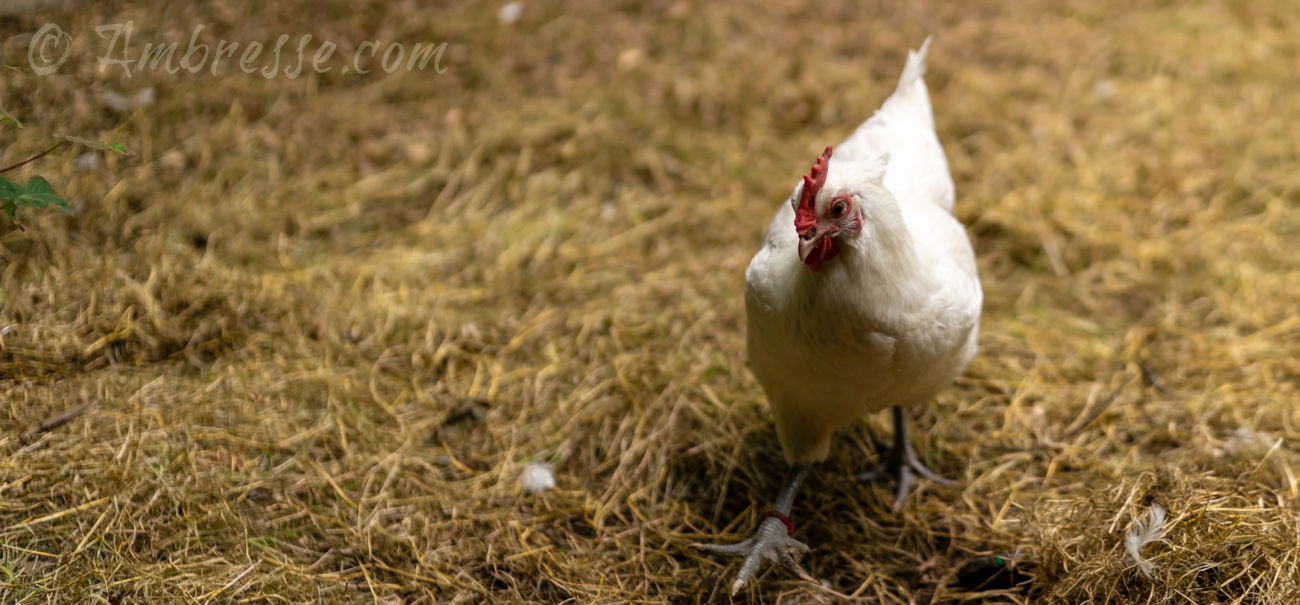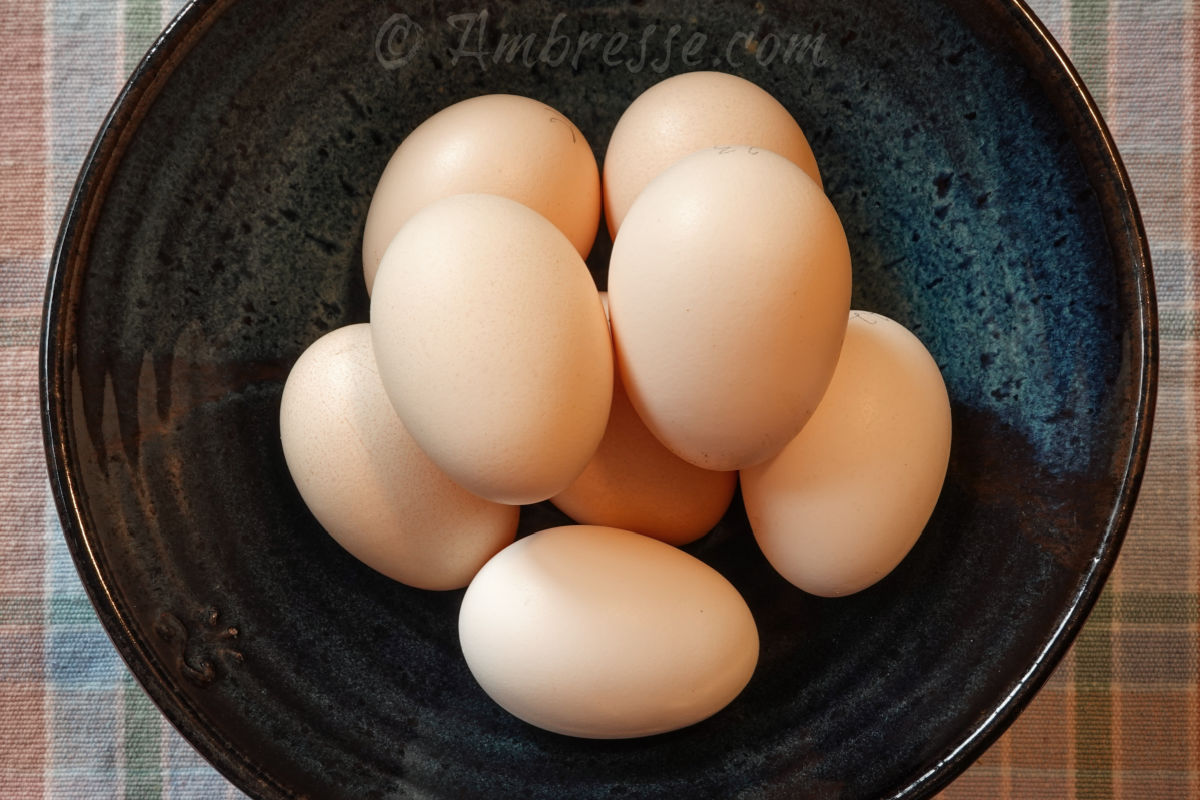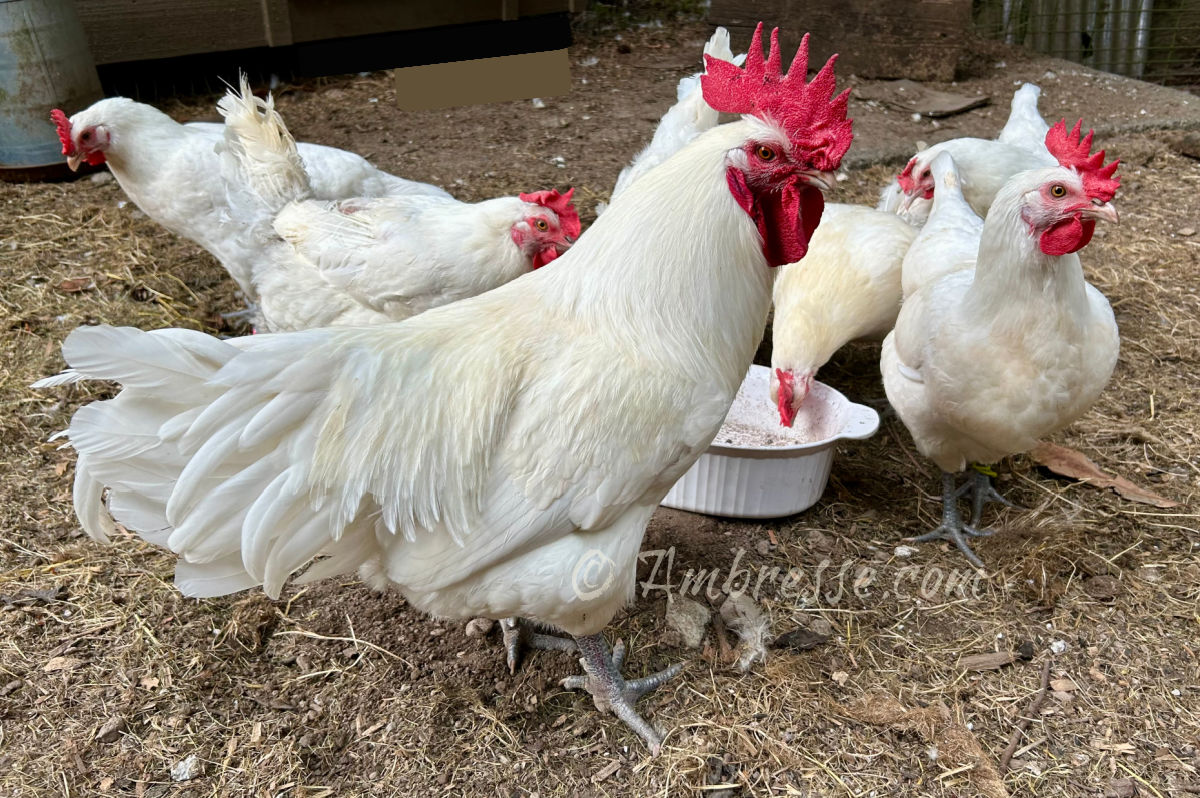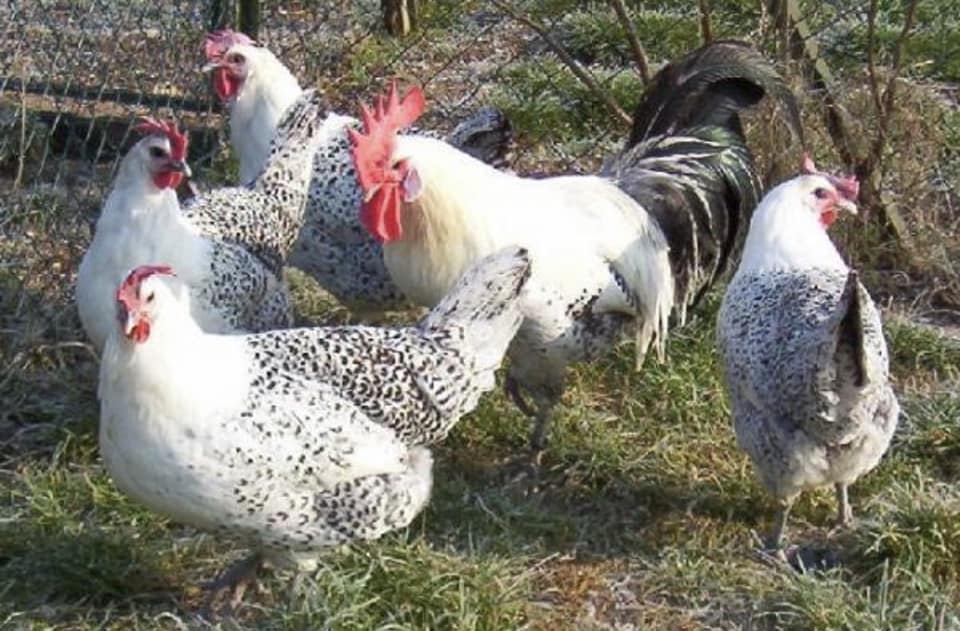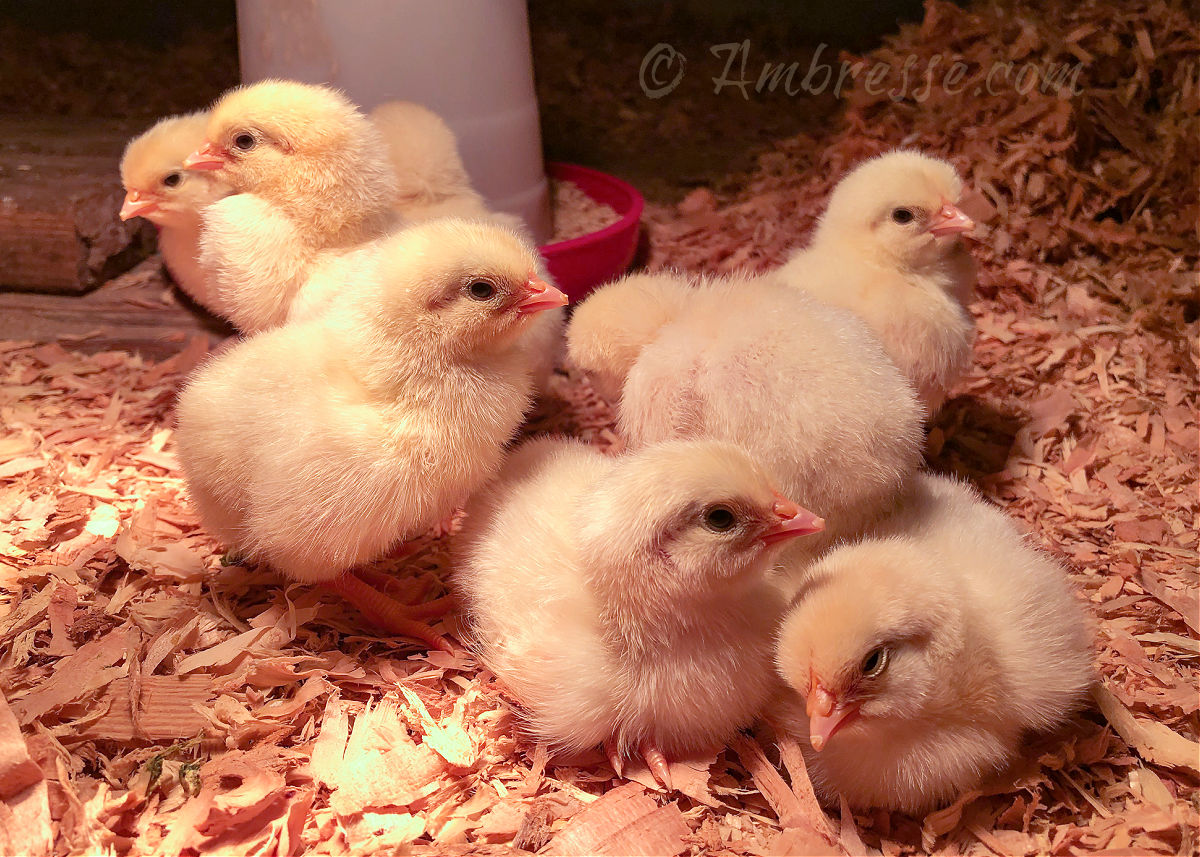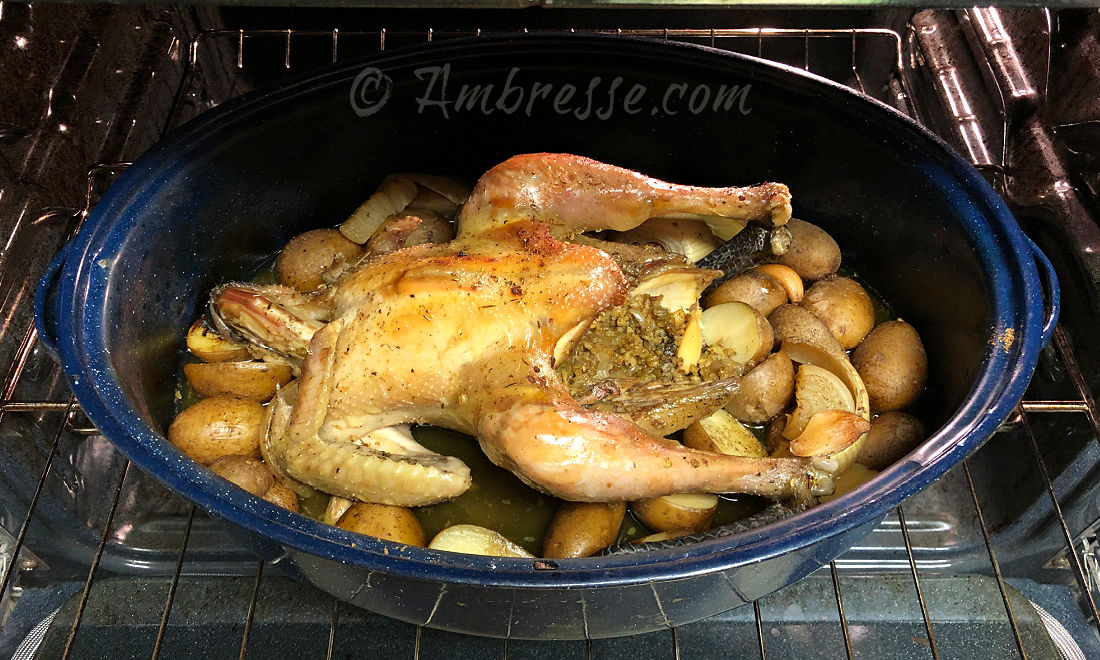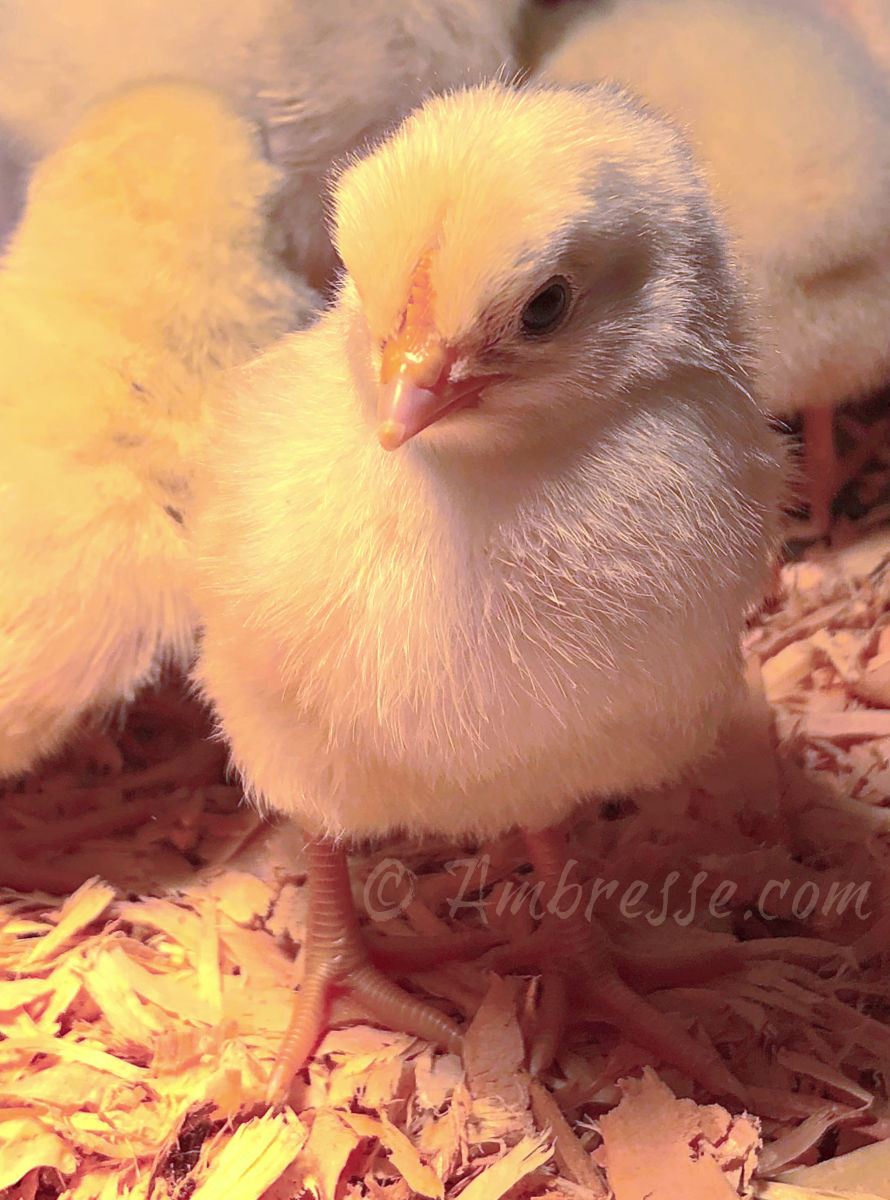American Bresse Chickens
American Bresse Chickens: Details about Bresse Chickens in North America, an overview of the American Bresse breed, descriptions, photos, chicks, eggs, and more.
Bresse Chickens have been described as the best-tasting chicken in the world, especially in France. Terms like "the queen of poultry" and "poultry of kings" penned in the mid-19th century are a reflection of the unique richness of this breed.
Nor are they slouches regarding egg-laying. With reason they are called a dual-purpose breed. (I call them "triple-purpose," because of their propensity toward rich taste and fat marbling.)
Overview of the American Bresse Chicken
American Bresse are a medium sized dual purpose breed. They grow very rapidly until they reach their adult weight of up to 8.5 pounds.
Additionally, the drive to forage appears to be built into their genetic code. The long-standing French practice of feeding low protein feeds has resulted in birds that forage heavily for bugs, worms, and other nutrition. Give them a pasture, and the feed bill will drop.
American Bresse Chickens Excel in Both
Meat and Egg Production
American Bresse as a Meat Breed
Meat production is where the American Bresse shine, as compared to other chicken breeds. Multiple sources describe them as "the most delicious chicken in the world"9; how do you beat that?
Two factors contribute to the heavy praise.
Fat-marbling. Preparing the bird for market in the time-tested methods utilized by French farmers before butchering (known as finishing) results in the famous, Angus-steer-like, fat-marbling throughout the meat for which the Bresse chicken is known. This is a big reason why gourmet chefs have a love affair with Bresse chickens. The fat that melts while cooking contributes to the melt-in-your mouth explosion of chicken flavor even when prepared with minimal herbs or spices. (Is fat bad for you?)
Flavor. Properly prepared, American Bresse chickens have a rich, even dramatic poultry flavor. That rich flavor may be due to feeds, air-drying, fat-marbling, and most probably more than a touch of genetics. The French believe that the unique Bresse flavor results not only from genetics, but also from the terroir*- the collective physical qualities of the Bresse Valley location, including the feeds and forages that grow there.
Terroir
"Terroir* is a French term used to describe the environmental factors that affect a crop's phenotype, including unique environment contexts, farming practices and a crop's specific growth habitat. Collectively, these contextual characteristics are said to have a character; terroir also refers to this character.
"Terroir is the basis of the French...appellation d'origine contrôlée (AOC) system..." (Wiki).
Bresse chickens are the only living creatures protected by the French AOC system, which presumes that the land on which the chickens are reared and on which their feeds and forages are grown imparts the unique qualities and flavors that are specific to Bresse Chickens. And as with protected wines, there will no doubt be some debate as to the extent of influence that terroir actually holds over the Bresse breed.
American breeders have certainly been raising some intensely flavored and fat-marbled American Bresse chickens; perhaps the North American terroir is not too shabby?
Cost of Bresse Chicken in Paris in 2025:
Bresse Chicken in Paris Markets: EU €40.00/kg (USD$48.00/pound)
Bresse Meal at Paul Bocuse in Lyon: EU €290 (USD$316)
American Bresse vs. Cornish Cross Meat Birds
For sheer speed of "days-to-market," I don't think any meat breed can compete with Cornish Cross chicks.
4-Way Terminal Cross
A two-way-crossed hen (AB) is bred with a two-way-crossed rooster (CD), producing 4-way crossed (ABCD) offspring. These offspring are your familiar "Cornish Cross" meat birds. All of them are destined for market by the time they are 6 to 8 weeks old, hence the word, "terminal."
Cornish Crosses are the result of a 4-way terminal cross using cockerels and hens that have been specifically bred for many generations for their screaming fast growth and double the muscle. They are nearly exclusively the main commercial meat breed around the globe. They gain at least a pound a week, and are market-ready in 6 to 8 weeks flat; if you miss the target date by much, you may lose birds to sudden death. Processed, they weigh 4.5 - 7 pounds. (Quick note: Cornish crossed with White Plymouth Rocks are called Cornish Rock Crosses.)
Freedom Rangers are another very popular meat chicken. These birds are also hybrids derived from heritage French stock from Burgundy and Brittany, and then crossed with American meat breeds such as New Hampshire. They perform a distant second to Cornish Cross itself. Freedom Ranger birds are ready for market at 9-11 weeks at weights of 5-7 pounds live weight. When processed, they weigh 3.5 - 5.5 pounds.
American Bresse can't compete with Cornish Cross in speed to market of course, but I doubt you'd want them to, as they'd lose the magic of flavor and succulence. They require a minimum of about 12 to 14 weeks to market, depending on whether you take the time to "finish" them or not. That is only slightly slower than the Freedom Rangers, and nearly on par with the hybrid known as Red Ranger.
Finishing does help to enhance the American Bresse meat qualities, although finishing is not an essential practice. Learn more about finishing American Bresse meat birds here.
American Bresse as Egg Layers
American Bresse chickens are also very good egg-layers, although Leghorns no doubt have them beat on the numbers. What is very cool is that it is not all that unusual that an Am Bresse pullet would start laying her first eggs at 17 weeks of age. The typical egg count per season per hen is around 250, although I'm sure some hens may lay up to 280 or so.
Interestingly, white and gray American Bresse tend to lay 2 ounce (57 gm) eggs which is a typical size, while the black and blue varieties of Am Bresse tend to lay larger eggs - around 2.25 ounces (63 gm). (Egg weight averages may include the smaller pullet eggs. Many breeders hatch only the eggs that are 60 grams or heavier.)
Am Bresse vs. Leghorn Egg Layers
Leghorns, both brown and white, are prolific egg layers, and are kept exclusively for their egg-laying capabilities. This is the breed that the big egg ranches use, and when the birds outlive their usefulness, they are trucked by the thousands over to Campbell's Chicken Soup, or another end-of-the-road destination.
Leghorns lay upwards of 280 white eggs per season, and some may lay up to 320 eggs. The eggs typically weigh 2 ounces (57 gm).
More info about American Bresse Eggs here.
Four Varieties of American Bresse Chickens
American Bresse chickens are found in four varieties: White, gray, black and blue, including splash varieties in both black and blue.
White American Bresse
The white American Bresse is the variety that has achieved commercial recognition in France, and is therefore more popular, imported in greater numbers, and is most common in North America.
Here is a brief description; see the standard of perfection for more detail:
- Feathers: White from top to bottom.
- Legs and feet: Unfeathered (clean). Leg color is "blue," which ranges in hue from light gray, to gray, to a distinctly blue-hued gray. Deeper hues are preferred.
- Combs and wattles: In males, a large, stiff, single comb and large wattles. The bottom line of the comb should not hug the head line, but should go straight out from the back of the head. In females, combs are average in size, and are expected to droop a bit.
- Ear lobes: White.
- Body: Broad and meaty, not too tall. Skin is white and somewhat thin. Bodies should not scream "leghorn."
- Weight: White American Bresse cocks should weigh 7.5 - 8.5 pounds (3.4-3.85 kg); cockerels should weigh 6.5 - 7.5 pounds. Hens should weigh 5.5 - 6.5 pounds (2.49-2.95 kg); and pullets should weigh 4.5 - 5.5 pounds.
- Egg Weight: 2 ounces (57 gms) on average in the first year of lay.
- Egg Color: Tinted. Color has not yet been "standardized"; as of 2024, American Bresse egg color ranges from nearly white, to ivory, tinted, cream, light golden tan, or very light brown eggs. Lighter shades are preferred. (The French Bresse standard calls for white eggs.)
Color Genetics: The ideal genetic combination that produces a white American Bresse chicken is I/I C/C.
- I/I = Two copies of the dominant white gene, which erases ALL black pigment and most yellow pigment.
- C/C = two copies of full color ("C"), with no copies of recessive white ("c").
The recessive white gene has unfortunately snuck into the white gene pool by way of the Black variety. This increases the chance of a combo of one dominant white gene with one recessive white gene in individual birds, leading to leakage of black pigment into white feathers. Learn more: American Bresse Genetics Questions.
Gray American Bresse
Gray is actually not gray, but silver-pencilled in black on the wings, hindquarters, and tail, with the head and the front of the bird being white. The white Am Bresse description above also describes Gray American Bresse, with the exception of feather color and genetics.
Pictured at right: Gray Bresse Gauloise chickens in France. Several breeders in North America are developing this variety as the recessive genetics in American Bresse begin to present themselves.
Black American Bresse
Black American Bresse vary little from White American Bresse, other than color and size. They are feathered in solid black, and they are up to a pound or so smaller.
Here is a brief description; see the standard of perfection for more detail:
- Feathers: Black from top to bottom, with a green-tinged glistening sheen.
- Splash Variety? Yes.
- Legs and feet: Clean, blue, in some birds dark, almost charcoal in color.
- Combs and wattles: Same as in White Am Bresse - In males, a large, stiff, single comb and large wattles. In females, combs are average in size, and are expected to droop a bit.
- Ear lobes: White.
- Body: Same as in White Am Bresse - Broad, meaty, not too leggy, white-skinned, fairly thin skinned.
- Weight: A standard for weight for color varieties has not yet been written.
- Eggs: 2+ ounces - possibly a bit larger than the eggs of the white variety.
- Egg Color: Tinted, light golden tan, or very light brown.
Blue American Bresse
Blue American Bresse vary from the Black Bresse mostly in color only. Blue Am Bresse are blue from top to bottom. The head and neck feathers are a bit darker blue than body feathers, which have a somewhat laced appearance.
Legs are a truer blue/gray as opposed the the darker gray of black American Bresse chickens. In all other ways they are similar to the black variety.
American Bresse Chicks
American Bresse chicks of all varieties are remarkably fast-growing. They forage early and well since they have been genetically encouraged to forage heavily.
The white American Bresse are usually born with pinkish or yellowish shanks (legs), which slowly take on the steel or blue hue over a period of two or three weeks or so. The underlying genetics affect the blue hue. Black and blue American Bresse shanks are sometimes nearly black, but certainly more on the steely blue than gray-blue.
Is American Bresse the Best Chicken in the World?
Well, this is a call that one must make for oneself, since the "best chicken in the world" is, for you, the breed that meets YOUR needs the best. Some breeds are excellent egg-layers, and some are great meat birds. The American Bresse chicken was bred in France to provide the best traits of both egg-layers and meat birds.
American Bresse are:
- Really good egg layers, but not quite as prolific as leghorns
- Excellent meat birds, bar none, because they are meaty without being freaky or prone to early death, they are fat-marbled, and they have intense flavor and moisture. But - they won't be ready for market nearly as fast as are the Cornish Cross.
Because of these characteristics, it may be hard to find a more all-around balanced or desirable breed of chicken.
Homesteaders and any who can develop a niche market for a gourmet chicken product will want to know more about American Bresse Chickens.
What do you think? Let us know!
Are You Considering Whether or Not to Raise American Bresse?
I'd like to remind you that of their many advantages, TASTE is one of the breed's major claims to fame. I encourage you to experience the taste for yourself!
As I write this page, there is an American Bresse chicken in a roasting pan in the oven. The smell is distracting me. I had prepared it like a small turkey, stuffing the cavity with a very simple traditional stuffing recipe, and placing it on a bed of potato halves.
Not five minutes ago, I did what all cooks do - opened the oven and sampled some of the dripping-soaked stuffing. Oh, my goodness. That punch of unique poultry flavor never gets old.
State of the American Bresse Breed
As of Fall, 2024:
- In North America, the vast majority of American Bresse chickens are white, for the reasons listed above. Black/blue/splash varieties are available, but are less common. The silver gene is still occasionally confused as splash, and is cropping up in color varieties.
- The gray variety is under development by at least two breeders.
- Breeders in North America are eyeing the development of a gourmet chicken market. As news about American Bresse spreads, inquiries are beginning to come in requesting commercial sources for high-end chicken products.
- In the USA and Canada: Breeders have established lines of communication on social media pages on both Facebook and Mewe. Consider joining these groups:
--American Bresse Chickens on Facebook
--American Bresse Breed Club on Facebook
--American Bresse Chickens on Mewe - American Bresse Poultry Buy-Sell-Trade. - Find American Bresse Chicken Breeders on the Ambresse website.
Find American Bresse Chickens for Sale Classified Ads on the Ambresse website. - An official American Bresse Breed Club has been established and spearheaded by experienced breeder Mandelyn Royal. Services and enrollment are projected to begin in early 2024. The club website is temporarily hosted here on the Ambresse website. Bookmark Ambresse.com to receive notices.
- The draft American Bresse Standard of Perfection (SOP) has been well received. It is basically the French Standard of Perfection, with a minor increase in weights for both male and female birds.
- The American Poultry Association does not yet recognize the American Bresse Chicken breed. This will hopefully change in a few years when the breed can fulfill APA requirements for recognition. (The process takes at least five years.)
- Ambresse.com is an educational tool boosting the visibility of the American Bresse chicken breed to the general public. Our mission is to support the success of the American Bresse breed throughout North America. We also support American Bresse breeders to the extent possible by being an adjunct tool for their use.
Breeders of American Bresse Chickens
Ambresse.com maintains a list of American Bresse Chicken Breeders that you might like to contact should you be interested in raising American Bresse chickens.
For a number of years, Greenfire Farms, the ranch that initially imported Bresse into the United States, and Bresse Farms in Mississippi, were virtually the only two hatcheries that could be found to supply chicks or eggs to breeders in the United States or Canada. Thirteen years have passed as of 2024, and more breeders are taking up the challenge of raising American Bresse.
The quality of American Bresse breeding stock that can be acquired today from dedicated breeders around the country has in many cases surpassed the quality of chicks that can be obtained from general hatcheries.

We at Ambresse.com wish you the very best of success and hope you'll join the mission of improving this wonderful heritage chicken breed!
- Home
- American Bresse Chickens
Overheard...
Tasty Recipe! "I processed my first batch of Bresse... Today I roasted one according (somewhat) to the recipe posted on Ambresse. It was delicious! Tender, moist and succulent... So happy I chose this breed!" (B.E., MN, 12/11/2024).
Success: "I can't believe all the inquiries we get through your website. And it's been a great resource to send people to who are interested in the (AB) breed" (Utangard Farm, NH, 5/5/2025).
Informational: "Your site has the first accurate information about American Bresse chickens that I have seen in English. Thanks for your diligent work" (L. Wooton, NC, 12/17/2024).

More Resources:
- https://www.bressefarms.com/about-breese-chickens.html
- https://greenfirefarms.com/american_bresse.html
- https://www.feathersite.com/Poultry/CGA/Bresse/BRKBresse.html
- https://sunbirdfarms.com/2015/01/lessons-american-bresse-two-years/
- https://cs-tf.com/bresse-chicken/
- https://www.thehappychickencoop.com/bresse-chicken/
- https://backyardpoultry.iamcountryside.com/chickens-101/bresse-chicken-breed-profile/
- https://www.cnn.com/travel/article/bresse-chicken-france/index.html
- https://morningchores.com/meat-chickens/
Translate This Page
Traduire Cette Page
Traduzca Esta Pagina

News
American Bresse Breed Club web pages can be found under the Breed Club tab on the navigation bar. Any changes in Club status will be posted here!
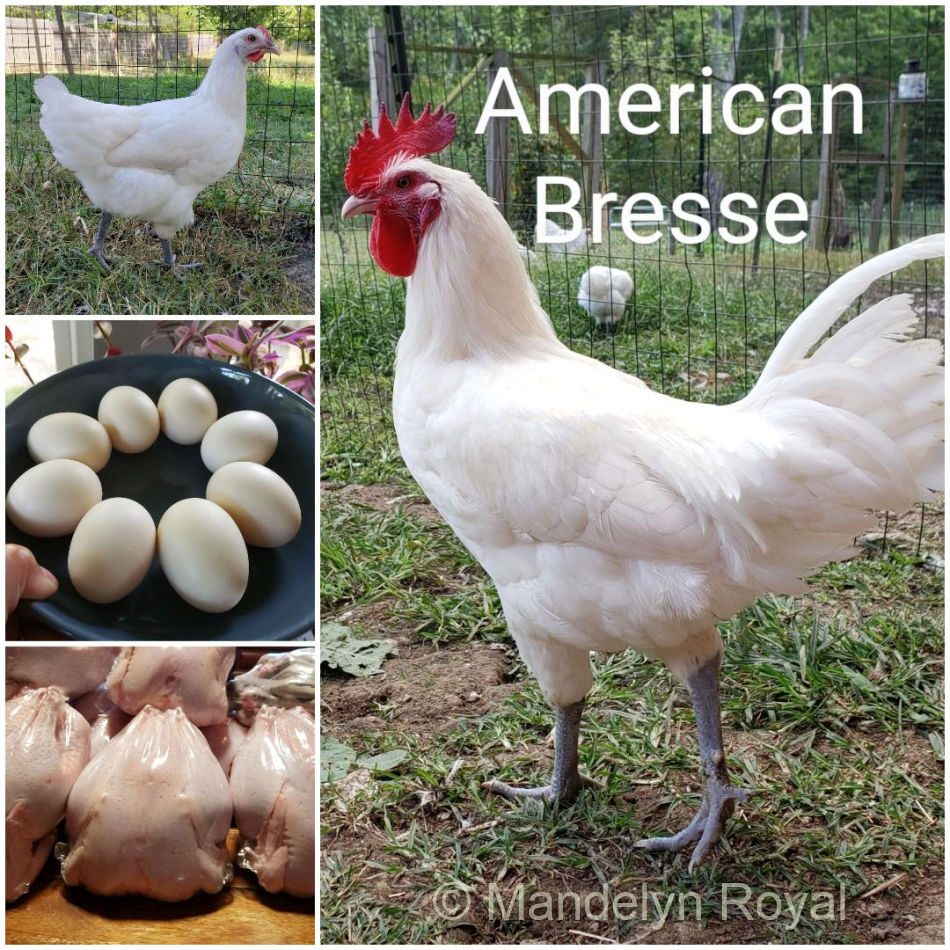
Photo credit: Mandelyn Royal.
